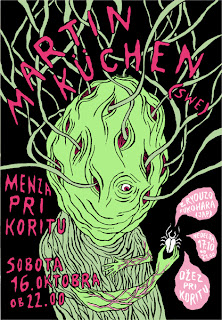Saturday, October 30, 2010
Thursday, October 28, 2010
Murakami and Versailles
1) Gustav Courbet and Takashi Murakami are both realists. In this case, realist refers to art that acts as political commentary. Courbet rebelled against the artistic traditions of his day by creating un-idealized images of normal working class people. The goal of his work is to document the contemporary culture of his day. Murakami's work functions in much the same same way. Instead of creating realistic images of normal people, Murakami's sculptures are inspired by manga and fetish culture. Though both artists used different mediums and methods, they both sought to use art to reflect culture.
2) The Murakam exhibit in Versailles brings together the old and the new. The austere atmosphere of Versailles makes a strong contridiction with the strange, brightly colored, cartoonish sculptures of Murakami. One represents the age of enlightenment and reason and the other the pinnacle of postmodernism. The decorations in Versailles speak of a time where art strove to create beauty. Murakami's work is more political in nature. He uses images from popular culture create a picture of the society he lives in. Taken together they create an image of a great and glorious past and a garish and vulgar future.
Wednesday, October 20, 2010
Iron Man
This movie poster is an excellent example of the blockbusters of the last few years. Just from the poster you can recognize all the classic elements of a box office hit. It shows a star studded cast, explosions, special effects, and a super hero. This last is particularly interesting. In the last few years we have seen a plethora of super-hero movies, many of which have been strong box office earners. There is also a strong military presence. Howard Taylor is in a air force uniform and helicopters and jets are shown flying in the background. The war has been increasingly present in our movies, even science fiction films like this one. Perhaps the most interesting thing about the poster is that the cast is scaled in order of their importance to the plot, but the largest figure on the screen is not the leading man, but rather the Iron-Man armor. The armor is not so much a character as a prop/special effect, nevertheless, it plays a larger role in the poster than any of the actors. This is partly because of the importance of the armor in the plot of the movie, but it is also indicative of the increasing prominence of special effects in our movies.
Dirty Harry
This poster for the film “Dirty Harry” is an excellent example of 70's movie posters. Like many older movie posters it uses illustration instead of photos, but unlike movie posters from the previous decade, it focuses on a single iconic image instead of multiple scenes from the movie. This is typical of 70's posters, which generally displayed a more unified and stylized design than posters from earlier decades. The image of the handgun/Clint Eastwood's face doesn’t tell you a great deal about the plot, but it does promise the violence for which both images are synonymous. The two tone shading hints at the film's stark morality. Since the movie's plot can be summed up in the sentence “Dirty Harry kills bad guys” the poster fits the film.
Kiss Me Deadly
Kiss me deadly is the definitive cold war paranoia move and the poster is an excellent example of it's type. The poster uses a montage of illustrations based on scenes from the film. There is a heavy emphasis placed on sex and violence. The text “Mickey Spillane's Latest H-Bomb!” hints at the threat of nuclear destruction faced by the protagonists.
Wednesday, October 6, 2010
Subscribe to:
Comments (Atom)


































